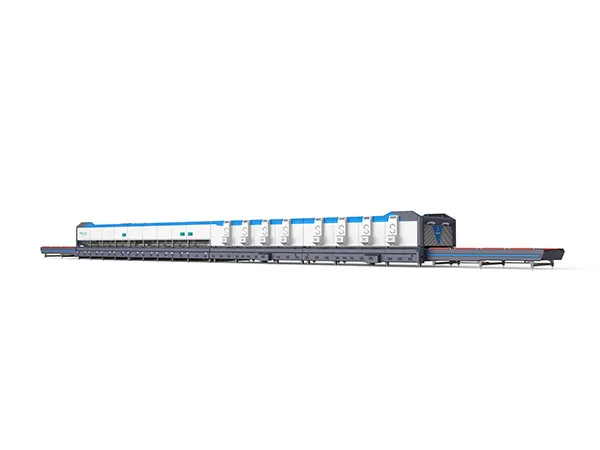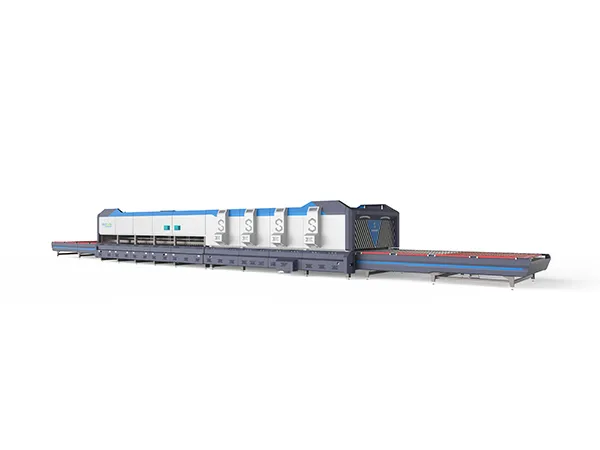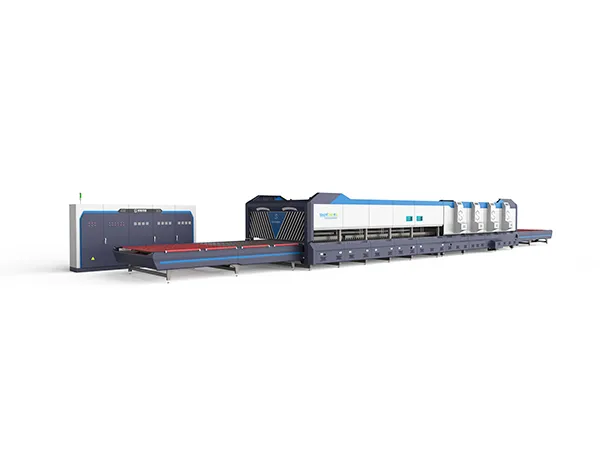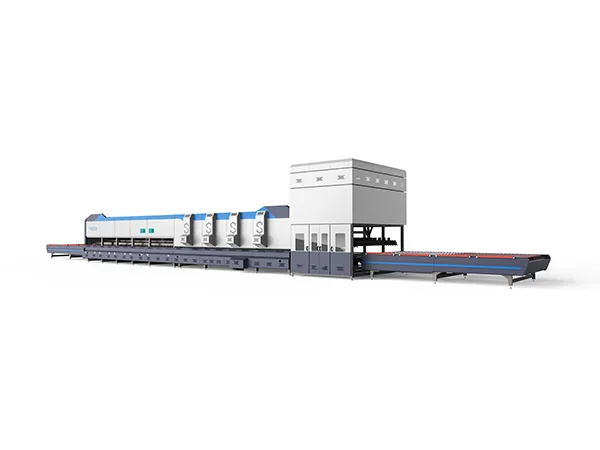The bending principle of a flat bending tempering furnace involves heating and shaping glass sheets into curved or bent forms. This process, widely used in manufacturing applications such as automotive and architectural glass, uses controlled heating, bending, and tempering to achieve the desired shape and mechanical properties.
Bending principle of flat bending tempering furnace

1. Heating Phase
The flat glass sheet is placed on rollers and enters the furnace, where it is gradually heated to the softening point (typically around 600-700°C, depending on the glass type).
The heating is carefully controlled to ensure uniform temperature distribution across the glass. Uneven heating can cause distortions or weak points.
2. Bending Process
Once the glass reaches the target temperature and becomes pliable, it is moved to a bending station where the actual shaping occurs. There are two main bending methods in flat tempering furnaces:
Gravity Bending: In this method, the glass is positioned over a mold, and gravity naturally pulls it into the desired shape as it softens.
Press Bending: Here, mechanical presses gently push the glass onto a mold, giving it the required curvature. This method allows for more precise control over the bend.
The mold and the pressure applied are designed to achieve the specific curvature required for the final product.
3. Tempering and Cooling Phase

After bending, the glass is quickly transferred to a cooling station (also known as a quenching zone). Rapid air cooling (quenching) solidifies the curved shape and strengthens the glass.
The high-speed air jets cool the outer surfaces faster than the interior, creating compressive stresses on the glass surface and tensile stresses within, which make the glass stronger and more resistant to breakage.
4. Final Inspection and Quality Control
After cooling, the glass is inspected for quality, ensuring it has achieved the correct shape, clarity, and strength.
This bending principle allows glass to be both functional and aesthetic, ideal for automotive windshields, windows, and other applications requiring durability and specific shapes.









